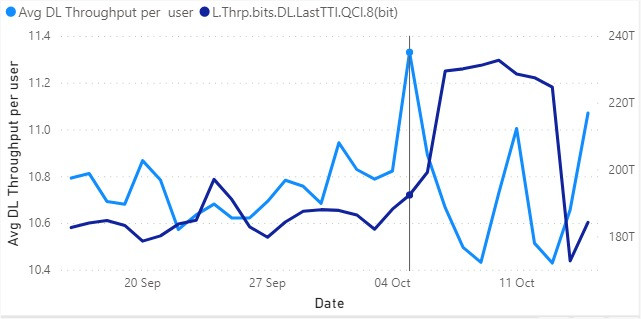Hi Guys,
Does anyone have an idea what does this counter in Huawei refers too?
And how its will impact in real time ?
L.Thrp.bits.DL.LastTTI.QCI.8 and what does TTI refers here?
Hi Guys,
Does anyone have an idea what does this counter in Huawei refers too?
And how its will impact in real time ?
L.Thrp.bits.DL.LastTTI.QCI.8 and what does TTI refers here?
It means volume of data sent in last TTI of scheduling for QCI8 summed for all UE during ROP.
TTI means transmission time interval.
You should see large numbers for this counter.
This is used to calculate user throughput without data in last TTI.
Thanks @RFSpecialist. Do you think if there the number of Transmit in this counter getting increase is a problem?
What i can see in my stats is, since the number of packets in the counter is getting increased, my throughput got low.
Is it somewhere related to RF or Core related problem?
Something like this is happening:

It’s nothing wrong is the way scheduler works.
A packet of 100 TTI can be sent continuously (99 TTI and 1 last TTI) or can be sent 50 times in short schedules of 2TTI in which case it will degrade your formula a lot.
You have the option to exclude this counter from user throughput formula.
The reason why it is increasing is because there is more and more traffic so scheduler sends data in shorter and shorter schedules.
3gpp recommends to use that counter in throughput KPI formula but you can simply take it out and define a second kpi without this counter so you can always compare both.
With or without that counter.
It also depends of traffic patern of the cell. Heavy downloading cells will not be much influenced by this counter. Low traffic will be influenced.
Do you have any idea, on these 2 counters?
Packet delay number has increased and time was reduced.
Then I have to go by layer wise to understand bit more on this behaviour…
Define another KPI and you will see what I mean.
But take care when you define formula, you have also to change the time counter (don’t use the one with rmv last packet).
Sure, thanks! 
Yes, core activities also may lead to increase last TTI which affect throughput, such as bypass getaways, or shift traffic between UGWs